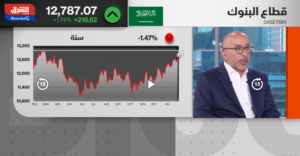“No one believes where the bottom is anymore. No one believes the original assumptions anymore …”
These words were uttered by an embittered investor in the aftermath of the 1929 market crash. Similar words have been spoken at every moment when markets have tumbled.
As we have become ever more sensitive to asset price movements, so their need to be protected has risen in every market cycle.
Gruelling market conditions have led to calls forever greater stimulus, even as international monetary agencies have always responded by arguing for austerity.
This is rather akin to trying to replicate a fire insurance policy by dynamically increasing or decreasing your coverage as fire conditions wax and wane. But one day, when your house is on fire, you call for more coverage. And simultaneously ask for reduced repairs.
Austerity syndrome
This is interesting. The very theory underlying all insurance against financial and economic panic falls apart in the face of an actual panic. A few smart renegades may have abandoned this old belief, but by and large, policy prescriptions still call for reining in expenditure, despite the preponderance of economic data that suggests otherwise.
In point of fact, its influence has mushroomed across the world, as emerging economies have been given the bitter tonic time and again about austerity, even as developed nations respond by increasing fiscal and monetary measures that go against what is being advocated to the rest of the world.
Setting off fear factor
Nobody understands panics, just as nobody understands the theory of market and economic cycles. Governed by human behaviour, herd mentality takes over and economic activity freezes. This leads to catastrophic effects that linger on for years, sometimes even decades, as policymakers respond with an increasing array of measures that often worsen the crisis.
The simple fact of the matter remains constant throughout the ages: austerity does not work, even less so in a more leveraged world. At this juncture, measures to mitigate include radical steps to provide liquidity at all costs to the consumer as well as to business, including measures such as suspending loan instalments across the board, as relief measures act as a buffer for the panic that is spreading across asset markets.
Shorter spans between panics
Financial panics have become commonplace; events that are supposed to have occurred every 100 years now take place every few years with some unnerving frequency. Could this be because the financial system of asset gathering as a form of saving (itself a hedge against inflation) badly underestimated the risk of austerity as policy prescription — and so conspired with human nature to create them?
Undoubtedly, the pain that is now being felt will be seen by many as a buying opportunity, which it is. However, for existing asset holders, even as they refinance their existing loan obligations, the imperative is for asset prices to return to fair value, and government intervention in the form of easing liquidity constraints is the most critical step that is required as we move forward.
In western countries, this is already underway. In countries like the UAE, which act as an important intermediary for routing of international trade, as well as build a base of underlying domestic assets, it is time to accelerate this approach with aggressive measures that provide immediate relief to the consumer and the business owner.
Banks need to step up
Banks play a critical role here, and only by working together will the economic aftereffects be contained. Markets will not function normally until they sense a direction and purpose; sometimes this takes years as sentiment slowly revives.
In other cases such as the 1987 crash, as well as many others, the panic is shorter in duration. Policy response comes to the fore.
Given the nature of capital and asset markets in the UAE which have already gone through sluggish times over the last few years, monetary and fiscal stimulus to get liquidity flowing again becomes the order of the day, despite its natural consequence of running budget deficits.
Reading the financial literature, you get the sense that there are almost two types of markets; one that is in real time, where the anxiety and fear and greed that is recorded. And then there is the other more theoretical model where these odd behaviours and the chaotic effects that they create are rationalised and are explainable.
The latter is an illusion, the former is not sufficiently understood. The speed with which the panic arrives at must be met equally rapidly with responses that seek to mitigate the financial fallout. The sooner this is understood as an anthology and as a path to recovery, the better we will all be for it.
— Sameer Lakhani is Managing Director at Global Capital Partners.





